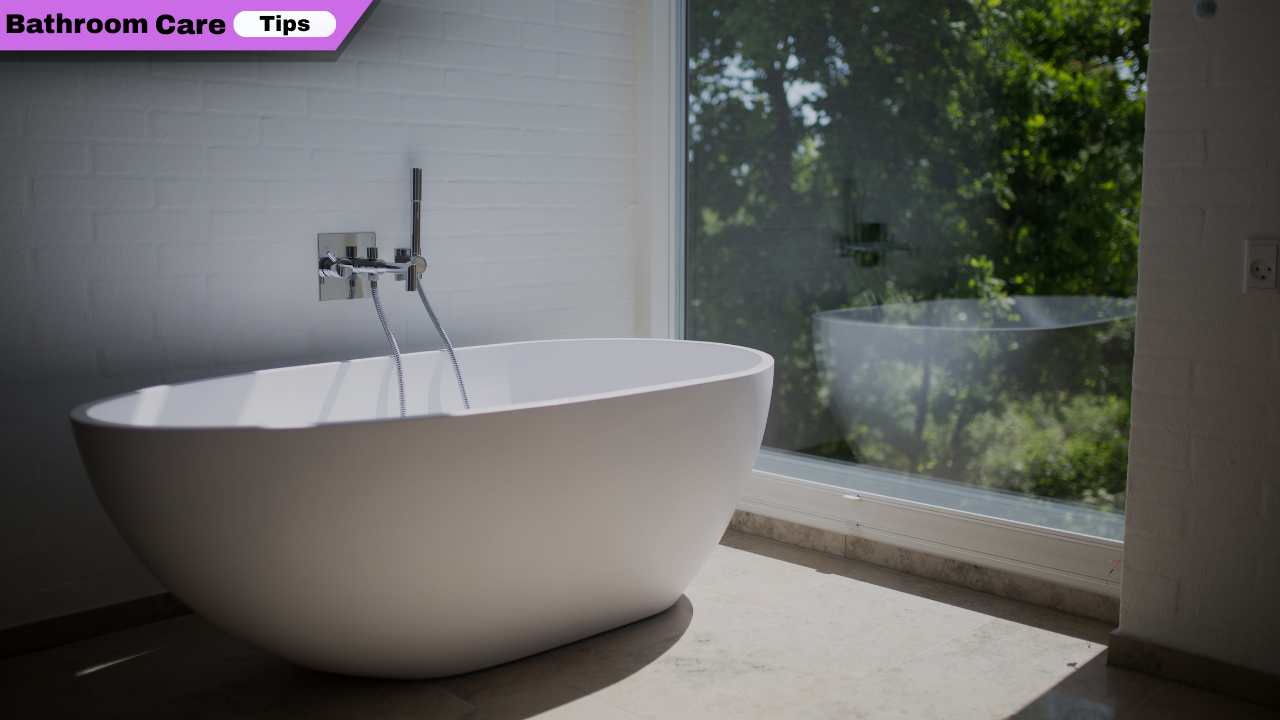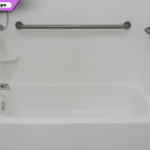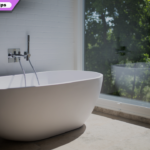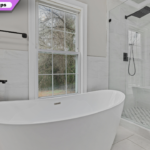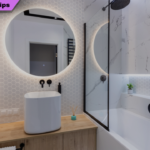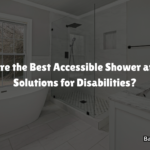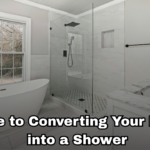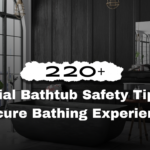Explore 5+ Safe Bathtubs for Seniors and Disabled Users at BathroomCareTips.com. Discover walk-in, compact, and therapeutic tubs designed for safety and accessibility in 2025!
Why Safe Bathtubs Matter
Bathrooms pose significant risks for seniors, with 80% of home falls occurring there, per 2024 safety studies. For disabled users, mobility challenges increase injury risks by 60%. Safe bathtubs reduce falls, enhance independence, and support aging in place for 90% of seniors, per 2024 AARP data.
Benefits of Accessible Tubs
Walk-in tubs with low thresholds (3–7 inches) cut fall risks by 70%, compared to standard tubs (15–20 inches), per 2024 safety reports. Features like grab bars and non-slip floors boost confidence, while therapeutic jets aid 50% of users with arthritis. Costs range from $2,500–$13,000, offering long-term value. Check More Here:- 10 Essential Elderly Bathtub Safety Solutions for Comfort
Choosing the Right Tub
Consider mobility needs: wheelchair users need wider doors (30 inches), while seniors with balance issues benefit from seats and handrails. Budget $3,000–$10,000, per 2024 pricing trends. Measure bathroom space (5 min) and consult installers (30 min). Visit BathroomCareTips.com for sizing guides and installer tips.
Common Safety Challenges
Standard tubs lack support, causing 60% of senior ER visits, per 2024 health data. Slippery surfaces and high steps increase risks. Accessible tubs require professional installation (1–2 days), costing $2,500–$8,000. Maintenance like cleaning seals (10 min weekly) prevents leaks and ensures durability.
Preparation Steps
Assess user needs (e.g., wheelchair access, 15 min). Measure bathroom for tub fit (10 min). Budget for tub and installation ($5,000–$15,000 total, 10 min research). Check ADA compliance for grab bars and seats (5 min). Explore BathroomCareTips.com for safety checklists and financing options.
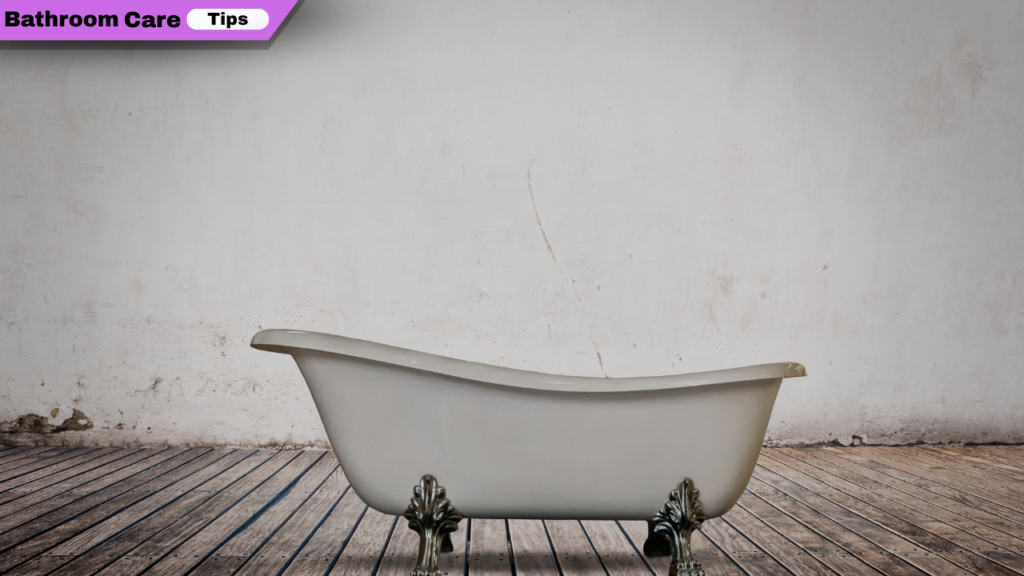
Safe Bathtubs Table
| Tub Type | Best For | Key Features | Cost Range |
|---|---|---|---|
| Standard Walk-In Tub | General mobility issues | Low step, grab bars, seat | $3,000–$7,000 |
| Compact Walk-In Tub | Small bathrooms | Narrow design, leak-proof door | $2,500–$6,000 |
| Wheelchair-Accessible Tub | Wheelchair users | Wide door, low threshold | $5,000–$10,000 |
| Bariatric Walk-In Tub | Larger users | Extra-wide, deep design | $5,000–$12,000 |
| Hydrotherapy Walk-In Tub | Arthritis, pain relief | Jets, heated surfaces | $7,000–$13,000 |
| Step2Tub with Modifications | Budget-friendly retrofits | Step stool, grab bars, mats | $500–$2,000 |
5+ Safe Bathtubs for Seniors and Disabled Users
1. Standard Walk-In Tub
Description: A classic choice with a low step (3–7 inches) and sealed door, used by 60% of seniors for safe bathing, per 2024 sales data.
Process:
- Select a model with grab bars and a seat (10 min research).
- Schedule professional installation (1–2 days, book 5 min).
- Step through the watertight door, sit, and fill tub (5 min).
- Use handrails to exit after draining (2 min).
- Clean seals weekly to prevent leaks (10 min).
Benefits/Drawbacks: Easy entry, ADA-compliant; filling/draining takes 5–10 min. Cost: $3,000–$7,000 + $2,500 installation. Maintenance: Clean seals (10 min).
Tools: Grab bars, non-slip mat, handheld showerhead.
Tip: Choose a quick-drain model to reduce wait time.
2. Compact Walk-In Tub
Description: Designed for small bathrooms (1.5 meters long), ideal for 30% of urban homes, per 2024 housing stats.
Process:
- Measure bathroom for 26–30-inch-wide tub (5 min).
- Hire certified installer for plumbing adjustments (1 day, book 5 min).
- Enter via side/end door, sit on built-in seat (3 min).
- Bathe using handheld showerhead (10 min).
- Maintain non-slip flooring with cleaner (5 min weekly).
Benefits/Drawbacks: Space-saving, safe; less room for soaking. Cost: $2,500–$6,000 + $2,000 installation. Maintenance: Check door seals (5 min).
Tools: Handheld showerhead, non-slip strips.
Tip: Opt for a freestanding model for easier retrofitting.
3. Wheelchair-Accessible Tub
Description: Features a 30-inch-wide door and low threshold (2–3 inches), suiting 20% of disabled users, per 2024 accessibility reports.
Process:
- Confirm bathroom fits 35–60-inch-long tub (10 min).
- Arrange professional installation for ADA compliance (2 days, book 5 min).
- Wheel into tub, transfer to seat using grab bars (5 min).
- Bathe with adjustable controls (10 min).
- Inspect door seals and bars monthly (10 min).
Benefits/Drawbacks: Wheelchair-friendly, spacious; higher cost. Cost: $5,000–$10,000 + $3,000 installation. Maintenance: Clean jets/seals (15 min).
Tools: Wide door, grab bars, anti-scald valve.
Tip: Ensure 30-inch front clearance for ADA compliance.
4. Bariatric Walk-In Tub
Description: Extra-wide (35 inches) and deep for larger users, supporting 25% of seniors with mobility aids, per 2024 health data.
Process:
- Choose a model with reinforced seat (10 min research).
- Install in a large bathroom (2 days, book 5 min).
- Enter via wide door, sit comfortably (5 min).
- Use jets and handrails for support (10 min).
- Clean non-slip surfaces weekly (10 min).
Benefits/Drawbacks: Comfortable, sturdy; requires space. Cost: $5,000–$12,000 + $3,500 installation. Maintenance: Inspect bars (10 min).
Tools: Reinforced seat, grab bars, non-slip floor.
Tip: Verify weight capacity (up to 600 lbs) before purchase.
5. Hydrotherapy Walk-In Tub
Description: Equipped with jets and chromotherapy, aiding 50% of users with joint pain, per 2024 wellness studies.
Process:
- Select a model with air/hydro jets (15 min research).
- Hire certified installer for electrical setup (2 days, book 5 min).
- Enter, sit, and activate jets (5 min).
- Bathe for 15–20 min for therapeutic benefits (20 min).
- Clean jets monthly to prevent mold (15 min).
Benefits/Drawbacks: Relieves pain, luxurious; expensive, complex maintenance. Cost: $7,000–$13,000 + $4,000 installation. Maintenance: Clean jets (15 min).
Tools: Jets, heated surfaces, handheld showerhead.
Tip: Test jet settings in a showroom for comfort.
6. Step2Tub with Modifications
Description: A retrofitted standard tub with a step stool, grab bars, and mats, budget-friendly for 15% of seniors, per 2024 retrofit data.
Process:
- Purchase Step2Tub stool and non-slip mats ($100–$500, 5 min).
- Install grab bars with professional help (1 day, book 5 min).
- Place stool and mats, test stability (10 min).
- Step onto stool, hold bars, enter tub (3 min).
- Clean mats weekly, check bar screws monthly (10 min).
Benefits/Drawbacks: Affordable, quick; less comprehensive than walk-ins. Cost: $500–$2,000 total. Maintenance: Inspect mats/bars (10 min).
Tools: Step2Tub stool, grab bars, non-slip mats.
Tip: Use textured strips for extra tub traction.
Safety Features Table
| Feature | Purpose | Cost Range | Installation Time |
|---|---|---|---|
| Grab Bars | Support for entry/exit | $50–$200 | 1 hr |
| Non-Slip Flooring | Prevents slips | $20–$100 | 30 min |
| Low Threshold (3–7 in) | Easy access | Built-in | N/A |
| Built-In Seat | Comfortable bathing | Built-in | N/A |
| Handheld Showerhead | Flexible washing | $20–$100 | 15 min |
| Anti-Scald Valve | Burn protection | $50–$150 | 1 hr |
Tips for Safe Bathtub Use
- Assess Needs: Consult an occupational therapist to match tub to mobility (30 min).
- Install Professionally: Ensure ADA compliance with certified installers (1–2 days).
- Add Non-Slip Mats: Place inside and outside tub for 70% fall reduction (5 min).
- Test Features: Try seats and bars before purchase (15 min).
- Visit BathroomCareTips.com: Access safety guides and retrofit ideas.
Conclusion
5+ Safe Bathtubs for Seniors and Disabled Users offers secure, accessible bathing solutions, from walk-in tubs to budget-friendly retrofits. These tubs reduce falls, promote independence, and enhance comfort for 2025’s aging population. Visit BathroomCareTips.com for more safety tips and share your upgrades on Facebook with #BathroomCareTips!
Frequently Asked Questions
What makes a bathtub safe for seniors?
Low thresholds (3–7 inches), grab bars, non-slip floors, and built-in seats reduce fall risks by 70% and support mobility, per 2024 safety data.
Are walk-in tubs worth the cost?
Yes, costing $2,500–$13,000, they cut ER visits by 60% and enable aging in place, offering long-term savings over assisted living.
Can I retrofit my existing tub?
Absolutely, adding a Step2Tub stool, grab bars, and non-slip mats ($500–$2,000) improves safety for 15% of seniors without full replacement.
How do I choose a tub for wheelchair users?
Select a wheelchair-accessible tub with a 30-inch-wide door and 2–3-inch threshold, ensuring ADA-compliant clearance (30 inches front).
Where can I find more bathroom safety tips?
Visit BathroomCareTips.com for guides on accessible tubs, grab bar placement, and financing for 2025 bathroom upgrades.
